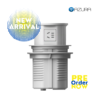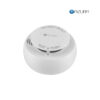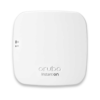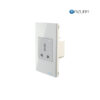
Regularly change passwords and pins for connected devices
It may sound simple but regularly changing your passwords and pin codes on connected devices like smart locks are crucial to keeping hackers at bay. Start with changing your Wi-Fi password regularly, as that is often one of the most commonly accessed entry points for cyber attackers into your home. Use password managing software, such as Dashlane and 1Password, to ensure your passwords are complex, different for every device and website, and do not follow any convention.

Only use products that are tested and certified
Don’t trust devices that haven’t received testing or certification, and also consider the networking protocols and product support. Among the various smart home protocols, Z-Wave is the longest established, and as a result, has invested the most focus on cyber protection. Z-Wave is a fast-growing wireless mesh networking protocol that offers both low-power connectivity and a robust product ecosystem – over 2400 devices from hundreds of brands across lighting, security, control and more have been Z-Wave certified through the Z-Wave Alliance, and 100M Z-Wave devices have shipped since its inception. Z-Wave certification is a rigorous process that institutes a comprehensive testing suite to ensure enterprise-level security and guaranteed product interoperability, meaning that all certified Z-Wave products will work together, regardless of manufacturer or product type. A Z-Wave certified device will always be backward and forwards compatible regardless of any upgrades in any future versions that are released, ensuring your home is protected both now and in the future.


Install devices that have additional security built-in
In addition to being reliable through third-party certification, make sure each individual product also provides some level of built-in security. Z-Wave also features built-in security using industry-standard AES-128 encryption –as do many other wireless protocols. But Z-Wave certified products now require the newly-created Z-Wave Security 2 (S2) framework, developed in conjunction with the cybersecurity expert community and designed to create a world-class defense against anyone trying to gain access to connected devices. This gives the already secure Z-Wave device ecosystem new levels of impenetrability and protection against common hacker methods. There are already over 100 certified devices with Z-Wave S2 Security in the market in less than a year, that number is expected to grow substantially over the next few years.









